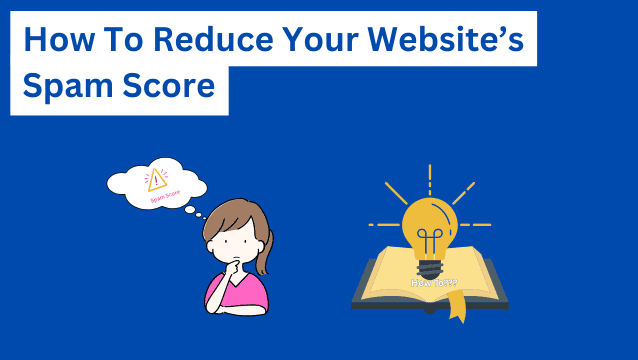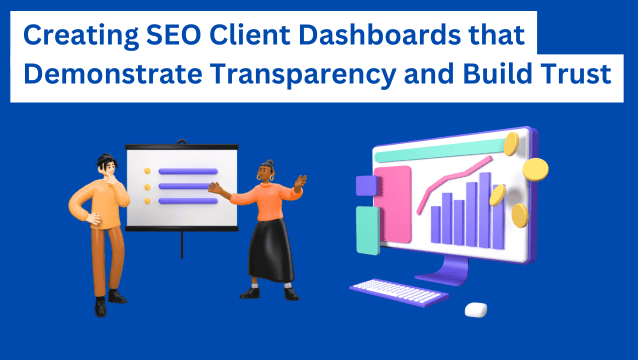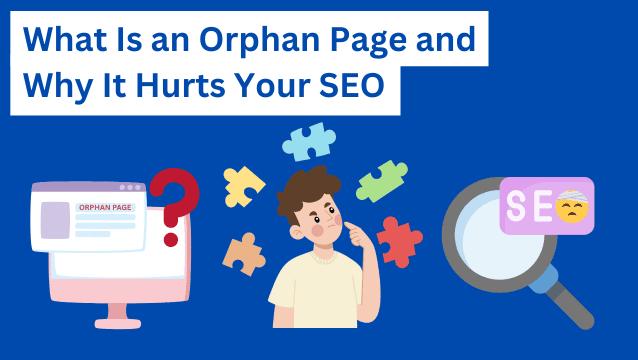Looking to create interest and drive demand for your product or service throughout the entire buyer journey?
You need demand generation strategies under your belt.
But more importantly, you need to make sure you can measure how revenue-driven they are. (That’s why we created this helpful reference guide for you and your teams.)
Let’s take a closer look at the top demand generation metrics you need to keep an eye on to move prospects from stranger to customer, and ideally, into loyal promoters.
Highlights
- Customer Acquisition Cost (CAC) is going up, but it’s still key to keeping your spending in check while growing. Watching CAC by channel helps you spend smarter.
- Content engagement isn’t just clicks anymore. Metrics like time on page, scroll depth, and downloads reveal how interested your audience really is.
- MQLs and SQLs are changing. With AI helping out, the line between them is getting fuzzier — but that means smarter, more accurate lead qualification.
- Lead Velocity Rate (LVR) and multi-touch attribution are super helpful for spotting which campaigns really work.
1. Marketing qualified leads (MQLs) and sales qualified leads (SQLs)
MQLs are leads that show interest and meet certain scoring criteria. They indicate potential to buy, but they aren’t ready for a sales call yet. SQLs are vetted leads who are usually ready for direct sales outreach.
Tracking the flow from MQL to SQL helps you measure how well your marketing and sales align in moving prospects through the funnel.
What to do
Track the conversion rate from MQL to SQL closely to spot bottlenecks early. If many MQLs aren’t progressing, dig into your lead scoring criteria.
Are you capturing intent signals like content downloads, demo requests, or repeated site visits?
Use AI tools like 6sense or HubSpot AI to look at many signals at once and update lead scores automatically. This helps your sales team focus only on leads who are truly ready, so the process is faster and more effective.
2. Customer acquisition cost (CAC)
CAC is the total amount you spend to get a new customer. It’s also an important metric to track since it varies widely across the B2B space.
This includes your total marketing and sales spend divided by the total number of customers. Knowing your CAC helps you truly understand the cost of growing your business.
What to do
Break down CAC by channel and campaign to spot hidden inefficiencies. (Paid ads might bring leads fast but cost more, while organic strategies take time but are cheaper over time.)
Use attribution models to fairly assign costs like salaries or software. If CAC starts rising, check if your targeting is too broad. Look for smaller, high-performing segments where CAC stays healthy, and invest more there.
3. Lead velocity rate (LVR)
LVR measures how quickly your leads grow over time. It shows if your pipeline is filling up fast enough to meet future sales goals.
What to do
Track your overall LVR, but also break it down by lead source, location, or product. Some areas may be booming while others lag.
Match LVR with lead quality to avoid chasing just numbers. If a campaign’s LVR drops, check if your content and CTAs fit the buyer’s stage.
Spotting slowdowns early lets you fix pipeline gaps before they cause bigger problems.
4. Content engagement metrics (time on page, scroll depth, downloads)
These metrics show how visitors interact with your content, including how long they stay, how far they scroll, and what they download. They reveal how interesting and useful your content is.
What to do
Use tools like Google Analytics 4 or Hotjar to measure these behaviors.
Low engagement means your content might need a refresh, like better structure, clearer CTAs, or different formats like videos or infographics. Segment engagement by traffic source or audience to tailor your content more effectively and boost conversions.
5. Lead-to-customer conversion rate
The lead-to-customer conversion tracking rate shows how many leads actually become paying customers. It helps you understand how well your sales and marketing efforts turn interest into revenue.
What to do
Track this rate by channel, campaign, and buyer persona to find funnel leaks. Optimize landing pages, follow-up emails, and sales handoffs where performance lags.
Be sure to also analyze your CRM data for patterns in successful conversions and replicate those tactics. Small changes in sales scripts or timing can have a big impact here.
6. Revenue attribution metrics (first-click, last-click, multi-touch attribution)
Revenue attribution metrics assign credit for a sale to different marketing touchpoints. First-click gives credit to the first interaction, last-click to the last, and multi-touch spreads credit across all interactions.
What to do
Multi-touch attribution works best with clean data.
Make sure tracking pixels and UTM codes are set up consistently. Use platforms like HubSpot or Marketo to assign proper credit and uncover which channels really drive revenue. This helps you invest wisely across the whole buyer journey, not just the final step.
7. Sales cycle length
Sales cycle length is the average time it takes to close a deal from first contact to purchase. Shorter cycles usually mean more efficient sales processes.
What to do
Look at cycle length by segment, product, or campaign. Long cycles might signal poor lead fit or missing content. Map out the process to find where prospects stall — maybe due to a lack of info, slow follow-up, or approval delays.
Tailor your lead-nurturing process to speed up decisions. For instance, send case studies to cautious buyers or competitive comparisons to unsure prospects.
8. Churn rate (CR)
Churn rate measures how many customers leave your business over a period of time. High churn means you’re losing customers faster than you’re gaining them. Reducing churn is pivotal to keeping your revenue steady.
What to do
Track churn monthly and by customer groups to catch trends. Analyze feedback, usage, and support tickets to find why customers leave.
Fix issues with personalized check-ins, loyalty rewards, or training. Use predictive tools to spot at-risk customers early and reach out with offers or help.
9. Net promoter score (NPS)
NPS measures how likely your customers are to recommend your business to others. It’s a quick way to gauge customer loyalty and satisfaction.
What to do
Don’t just look at the score.
Read the comments for common praise or complaints. They’re key to creating marketing strategies that convert.
Use positive feedback to create targeted testimonials and case studies that address buyer concerns. Reach out personally to unhappy customers to fix issues and turn them into promoters.
Regularly use NPS insights to shape your marketing messages so they connect better with your audience.
10. Cost per lead (CPL)
CPL tells you how much you spend to generate a single lead. It helps measure how efficient your lead generation efforts are.
What to do
Track CPL by channel, campaign, and audience segment to spot trends. If CPL spikes, it could mean market saturation or your ads are losing appeal. Try organic methods like guest blogging, partnerships, and SEO to lower costs.
Refine your targeting often. Narrow audiences usually bring better-quality leads and less wasted spend.
Another way to keep CPL in check is by ensuring your prospect lists are accurate from the start. Using a trusted email finder tool helps you connect with verified decision-makers, which reduces wasted outreach and improves the quality of leads entering your funnel.
Building further on this, many teams also run their contact lists through reliable validation platforms and tools. These email verification tools can confirm that addresses are active and accepting emails. This prevents wasted outreach and helps maintain sender reputation, keeping your CPL stable over time.
11. Pipeline coverage ratio
This ratio compares the value of your sales pipeline to your revenue goals. It shows if you have enough potential deals in progress to hit targets.
What to do
Watch pipeline coverage at multiple levels: Overall, by product, region, and sales rep.
Low coverage means you might miss revenue goals. Use predictive analytics to understand how pipeline stages convert and adjust your marketing efforts accordingly. When the pipeline is healthy, shift focus to improving lead quality and speeding up deal closures.
12. Intent data signals
Intent data tracks online behavior that shows a prospect’s buying interest, like visiting pricing pages or competitor sites. It helps identify who’s actively researching your product or service.
What to do
Add intent data to your CRM to trigger timely, personalized outreach. Prioritize leads showing buying signals for high-touch follow-up.
Combine intent with firmographic data for smarter targeting. Regularly review your data sources to cut noise and focus on signals that truly predict closed deals.
13. Geo-targeting results
Geo-targeting results reveal how your localized marketing messages perform by location. It helps you match language, culture, and buying habits for better relevance.
What to do
Tailor your ads, landing pages, and CTAs to fit regional preferences. Track performance by geography to find hot spots or weak areas. And shift budgets to regions with strong ROI.
Combine geo-targeting with local SEO and influencer partnerships to boost conversions and brand presence in key markets.
14. AI citation frequency
AI citation frequency measures how often AI tools like ChatGPT or Google’s Search Generative Experience (SGE) use your content to answer questions. High citation frequency boosts your authority in AI-powered search results, so more leads can find you.
What to do
Create clear, authoritative content that answers common questions.
Be sure to also:
- Use structured data and FAQs to help AI understand your pages.
- Build internal links to guide AI crawlers to your best content.
- Track AI citations and experiment with original research or expert interviews to increase your chances of being featured.
You also need to target longer conversational keywords that your target audience searches for. Brands that use precise buyer-focused language (i.e., long-tail keywords) are cited more often than those targeting broad, evergreen keywords.
This’ll help you build a strong presence in AI search over time.
15. High-quality backlink velocity
Backlink velocity tracks how fast you earn quality backlinks from trusted, relevant sites. Steady growth signals a strong, natural link profile to search engines.
The more authoritative your site is, the more website traffic and AI citations you’ll get.
What to do
Focus on earning links steadily from authoritative sites through valuable content like case studies, expert interviews, or original research.
Use outreach to build real relationships with industry publishers and bloggers. (Avoid sudden spikes in backlinks that look unnatural. Regularly check your backlink profile for harmful links and disavow them to protect your site’s reputation.)
How uSERP can help
Tracking these metrics is only part of the equation. Executing a strategy that actually moves them is where uSERP comes in.
As a leading performance-driven SEO and digital PR agency, uSERP helps brands increase authority, improve search visibility, and drive qualified demand at scale.
You can count on us to help you …
- Boost AI Citations: uSERP builds high-authority backlinks and thought leadership content that gets referenced by LLMs. This increases your chances of appearing in AI-generated search results like Google’s SGE and Perplexity.
- Accelerate Backlink Velocity with Quality: Our digital PR campaigns earn placements from trusted publications in your industry. This improves your domain authority and organic rankings without spammy tactics.
- Reduce CAC and CPL with Strategic SEO: We create and promote evergreen content that ranks, converts, and lowers acquisition costs over time.
- Support Multi-Touch Attribution: Our strategies integrate with your broader demand gen efforts, so SEO and PR support the entire funnel, from awareness to conversion.
To dig deeper into our results, read through our case studies.
Ready to scale demand with authority-first SEO and PR? Book a call with uSERP now.
Wrap up on demand generation metrics
The right demand generation metrics reveal what to fix, where to invest, and how to scale. Whether you’re measuring lead velocity, AI citation frequency, or high-quality backlink growth, each metric offers a clear signal of how well your sales funnel is working.
As 2025 brings more complexity to buyer journeys, marketing leaders need data they can act on.
Track what matters, optimize what works, and invest in strategies that noticeably drive demand.
Want help improving the metrics that move revenue? Book an intro call with uSERP.
FAQs
1. What are the most important demand generation metrics to track?
Key metrics include MQL to SQL conversion rate, Customer Acquisition Cost (CAC), Lead Velocity Rate (LVR), Content Engagement (time on page, downloads), Sales Cycle Length, and Revenue Attribution.
2. How do you calculate lead velocity rate (LVR)?
LVR = [(Leads This Month – Leads Last Month) / Leads Last Month] × 100
3. What is the difference between MQL and SQL?
MQL (Marketing Qualified Lead) is a lead that has shown interest through engagement but still needs further qualification. SQL (Sales Qualified Lead) is a lead that sales has vetted and is likely ready for a direct sales follow-up.
4. Why is Customer Acquisition Cost (CAC) important?
CAC helps you understand how much you’re spending to acquire a customer. This metric is essential for measuring the efficiency of your demand generation efforts.
5. How do you measure content engagement in demand generation?
You can measure content engagement through metrics like time on page, scroll depth, click-through rate (CTR), and downloads. These metrics indicate how interested and engaged users are with your content.
6. What is the lead-to-customer conversion rate?
Lead-to-customer conversion rate tracks the percentage of leads that ultimately become paying customers. It helps assess how effective your entire sales and marketing process is.
7. How can sales cycle length affect demand generation?
A long sales cycle may indicate inefficient lead nurturing or issues in the sales process.


